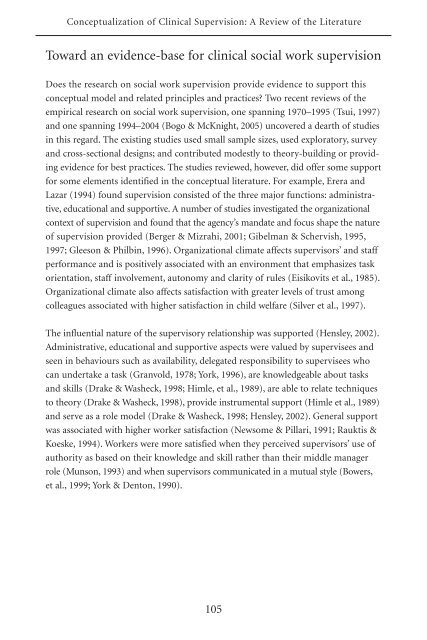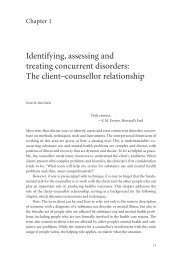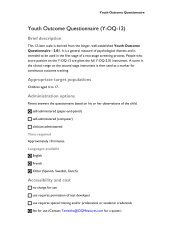Clinical Supervision Handbook - CAMH Knowledge Exchange ...
Clinical Supervision Handbook - CAMH Knowledge Exchange ...
Clinical Supervision Handbook - CAMH Knowledge Exchange ...
Create successful ePaper yourself
Turn your PDF publications into a flip-book with our unique Google optimized e-Paper software.
Conceptualization of <strong>Clinical</strong> <strong>Supervision</strong>: A Review of the Literature<br />
Toward an evidence-base for clinical social work supervision<br />
Does the research on social work supervision provide evidence to support this<br />
conceptual model and related principles and practices? Two recent reviews of the<br />
empirical research on social work supervision, one spanning 1970–1995 (Tsui, 1997)<br />
and one spanning 1994–2004 (Bogo & McKnight, 2005) uncovered a dearth of studies<br />
in this regard. The existing studies used small sample sizes, used exploratory, survey<br />
and cross-sectional designs; and contributed modestly to theory-building or providing<br />
evidence for best practices. The studies reviewed, however, did offer some support<br />
for some elements identified in the conceptual literature. For example, Erera and<br />
Lazar (1994) found supervision consisted of the three major functions: administrative,<br />
educational and supportive. A number of studies investigated the organizational<br />
context of supervision and found that the agency’s mandate and focus shape the nature<br />
of supervision provided (Berger & Mizrahi, 2001; Gibelman & Schervish, 1995,<br />
1997; Gleeson & Philbin, 1996). Organizational climate affects supervisors’ and staff<br />
performance and is positively associated with an environment that emphasizes task<br />
orientation, staff involvement, autonomy and clarity of rules (Eisikovits et al., 1985).<br />
Organizational climate also affects satisfaction with greater levels of trust among<br />
colleagues associated with higher satisfaction in child welfare (Silver et al., 1997).<br />
The influential nature of the supervisory relationship was supported (Hensley, 2002).<br />
Administrative, educational and supportive aspects were valued by supervisees and<br />
seen in behaviours such as availability, delegated responsibility to supervisees who<br />
can undertake a task (Granvold, 1978; York, 1996), are knowledgeable about tasks<br />
and skills (Drake & Washeck, 1998; Himle, et al., 1989), are able to relate techniques<br />
to theory (Drake & Washeck, 1998), provide instrumental support (Himle et al., 1989)<br />
and serve as a role model (Drake & Washeck, 1998; Hensley, 2002). General support<br />
was associated with higher worker satisfaction (Newsome & Pillari, 1991; Rauktis &<br />
Koeske, 1994). Workers were more satisfied when they perceived supervisors’ use of<br />
authority as based on their knowledge and skill rather than their middle manager<br />
role (Munson, 1993) and when supervisors communicated in a mutual style (Bowers,<br />
et al., 1999; York & Denton, 1990).<br />
105

















